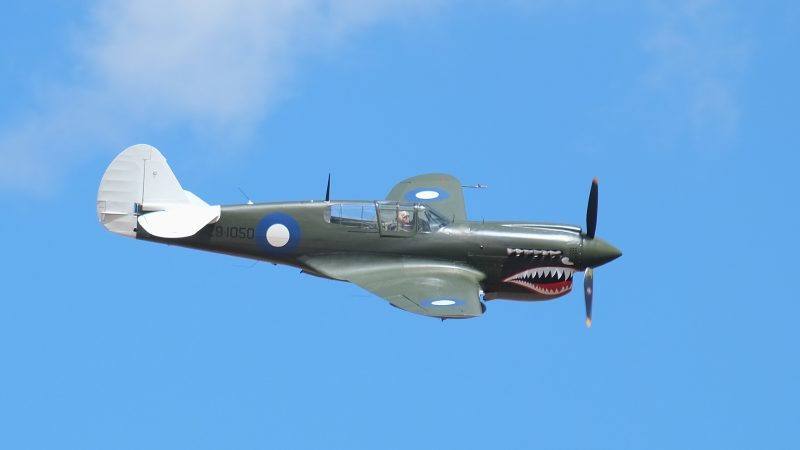Two battle-hardened Kittyhawks showcased some daring manoeuvres at the 2007 Classic Fighters airshow at Marlborough. Flying at racing speed to low altitudes, these two iconic Royal Australian Air Force and Royal New Zealand Air Force Curtiss P-40 Kittyhawks held the crowd in suspense as these warbirds replayed some of the dazzling stunts reminiscent of their service in the Pacific during WWII.
The Curtiss P-40 was an American-produced metal fighter and ground-attack aircraft. It was a single-seat warplane that was flown by some of WWII’s most acclaimed pilots. The P-40 had a swift entry into operational service, which made it a mainstay of the war effort. P-40s played a critical role for the Allied air forces in China, North Africa and, in the case of the two in this video, the Southwest Pacific.
Many variants of the P-40 were produced. The two models displayed in this video were among the most powerful and heavily armed variants, the P-40E and P-40N. The P-40E, supplied to the Commonwealth air forces at Kittyhawk Mk IA, truly was a battle-bird, seeing a heavy share of air combat in the first half of 1942. The P-40N, supplied as Kittyhawk Mk IV, built in 1943 and 1944, represented the final production model. It was the most common variant used by the Royal Australian Air Force.
Featured in this video are two Kittyhawks with rich histories of war service.
Displaying the ferocious American Volunteers Group shark-mouth nose art, this P-40E Kittyhawk was flown in active service from 1942 until the end of the war. It assigned to the Unites States Army Air Corps 68th Squadron based in Tonga in the wake of Pearl Harbour, and then sent to the Royal New Zealand Air Force 14th Squadron, alongside renowned pilot Geoff Fisken and his ‘Wairarapa Wildcat’ P-40, where it remained for the rest of the war. Indeed, the plane in this video was briefly restored from 1997-2003 as the ‘Wairarapa Wildcat II’ in honour of Fisken, as the original Wildcat was scrapped after WWII, before receiving the shark-mouth paint.
While the P-40N in this video has less flashy nose-art, its combat history is no less proud. It was assigned to the Royal Australian Air Force 75 Squadron in 1943, which flew P-40s in New Guinea. This P-40N, now known as ‘Currawong,’ was flown by some noteworthy pilots, including Geoff Williams, who flew this P-40N at Milne Bay, and Dick Sasse, Charles Bowly, John Bailey and Ben Weston, who all contributed wartime memories to a biography of this stalwart plane. In 1944, this plane suffered a series of landing and takeoff accidents, until an electrical failure lead to a crash landing at Tadji Airfield where it was abandoned.
Both veteran warplanes in this video hail from the restoration efforts of collector and enthusiast Charles Darby and are housed in New Zealand. Darby retrieved the P-40E from a New Zealand scrapyard in 1959, and the P-40N from a backyard in Auckland in 1974. What a sight to see them perform together in a daring duet of battle-trained prowess!
https://www.youtube.com/watch?v=E1cKPUWHa8I
